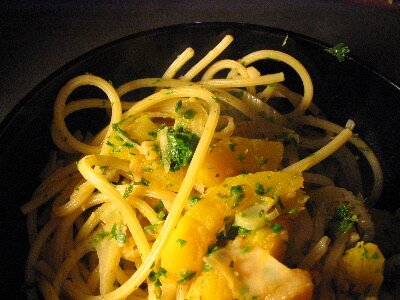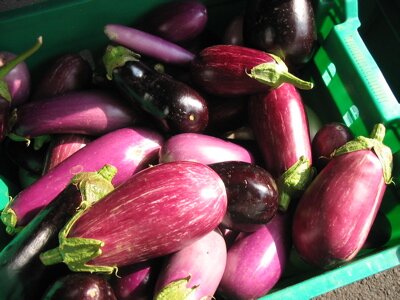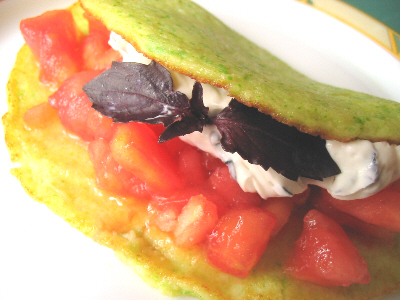Pig, part three of three and a half
We left Torsten knuckle deep in a ham, which by now is in the smokehouse. Charcuterie and the curing of meat is a ridiculously broad topic, the basics of which are fairly universal and easy enough to find in libraries or online. With an eye to specificity, I’ve decided to simply post the recipe we used, with comments and explanations in italics.
2lb salt
10g saltpeter
20g sugar
20g juniper berries
20g black peppercorns
3 bay leaves
5g nutmeg
Saltpeter is sodium nitrate, which, in and of itself, has no preservative effect at all. It does, however, get converted into nitrite by bacterial action, and nitrite, in addition to giving cured meat its colour, is a powerful preservative. Industrial cures use pure nitrite, but the byproducts of the bacterial conversion contribute to the flavour of artisanal charcuterie. Most cured meat, in fact, is fermented, by the exact same processes which wine and cheese are fermented, and the same family of bacteria – they produce lactic acid, which inhibits the growth of undesirable strains of bacteria, and the process shuts itself down when the lactic acid concentrations get too high for even lactobacteria to tolerate.
This is a dry cure – most meat is wet cured, by immersion in brine, because salt penetrates more quickly, and because less volume is lost. This is understandably appealing for industrial producers, but most traditional cures were wet also.
Grigson would have us believe that sugar is added not only for flavour but also to prevent “salt-burn” – a drying out and toughening of the surface of meat caused by too high a concentration of salt. As with most of her science, this is highly suspect, but it is actually possible to mess up a cure in this way.
Rub very firmly into meat, ensuring all surfaces are well coated. Stack in a tub, pour excess cure over the meat.
Torsten was ramming the cure as far as he could into the hock, so as to draw the fluid out from the knee. Since the synovial cavity is intact, we need to rely on osmotic action to do this, which is as problematic as it sounds. Hams, like our own unreliable carcasses, tend to go bad at the knee first.
Leave the tub in a cool, dry place. Every seven days, remove the joints from salt, brush them down and rub with fresh curing mix, preparing a fresh batch of cure if necessary. Drain the fluid that accumulates. Return to the tub, in reverse order (the one previously on top should go at the bottom), flipping the meat as well.
The duration of salting should be:
2 weeks for bacon & lardo
3 weeks for jowls
4 weeks for hams
My favourite part of the morning was when we had to dig the ribs out of the bacon. Normally you’d just cut the entire slab of meat off the bones, and sell the bones for spare ribs, but these had so little meat on them relative to the amount of fat that we’d practically have wound up with lardo if we’d done this. Lardo itself is back fat. You use it for cooking, and, yes, eating straight, in sweet, translucent shavings.
As a rough guide, a day in salt for a pound of meat.
Other sources suggest thickness may be a better guide, on the lines of 4 days per inch thickness of meat. This works out to about the same duration for everything but the hams (accounting for the fact that we had an aberrant amount of subcutaneous fat) – the hams, on the other hand, would have had to stay in almost twice as long).
Wash the meat off in cold running water, 12 hours for jowls and bacon, 24 hours for ham, dry in a warm air current.
Davidson would have us believe that this step is relatively uncommon outside Germany. Certainly Grigson never recommends this, and I haven’t seen it in Ruhlman’s new book either. Grigson’s recipes, English and French, tend to follow a dry cure with brine, after which the pork is either done or smoked – the brine effectively serves the same purpose, I suppose. Jabugo and prosciutto never get washed, merely brushed off or scrubbed down.
Everything gets a base smoke at 25-30 degrees C (80-90F) for 24 hours or till pale tan. Further smoking takes place according to the cut.
Lubeck is near enough the Baltic sea that it might as well be a coastal town. Long drying, in these conditions, is impossible, and so meat and fish are smoked instead when a dry cure is needed. Smoking ensures a suitably dry environment, as well as flavouring the meat and retarding the development of rancid flavours in fat – helpful, since salted meats are apparently more susceptible to fat breakdown. You can, incidentally, “wet-smoke” a meat – essentially by keeping the surface moist throughout the smoking process. The appeal of doing so is that, as with wet-curing, the effect is achieved much faster.
Bacon goes into a smoker at 18-20 C (65-70F) for 2-3 weeks till mahogany.
Jowls get heavy smoke at 40-50C (105-125F) for 4 days.
Hams stay in a cool smoke house at 18-20C (65-70F), getting a light smoke every other day, till asparagus sprouts.
Ham and asparagus is apparently a huge thing in northern Germany, like the first herrings in Denmark, or Beaujolais nouveau. The asparagus is steamed and served cold, and the dish goes with mustard.






